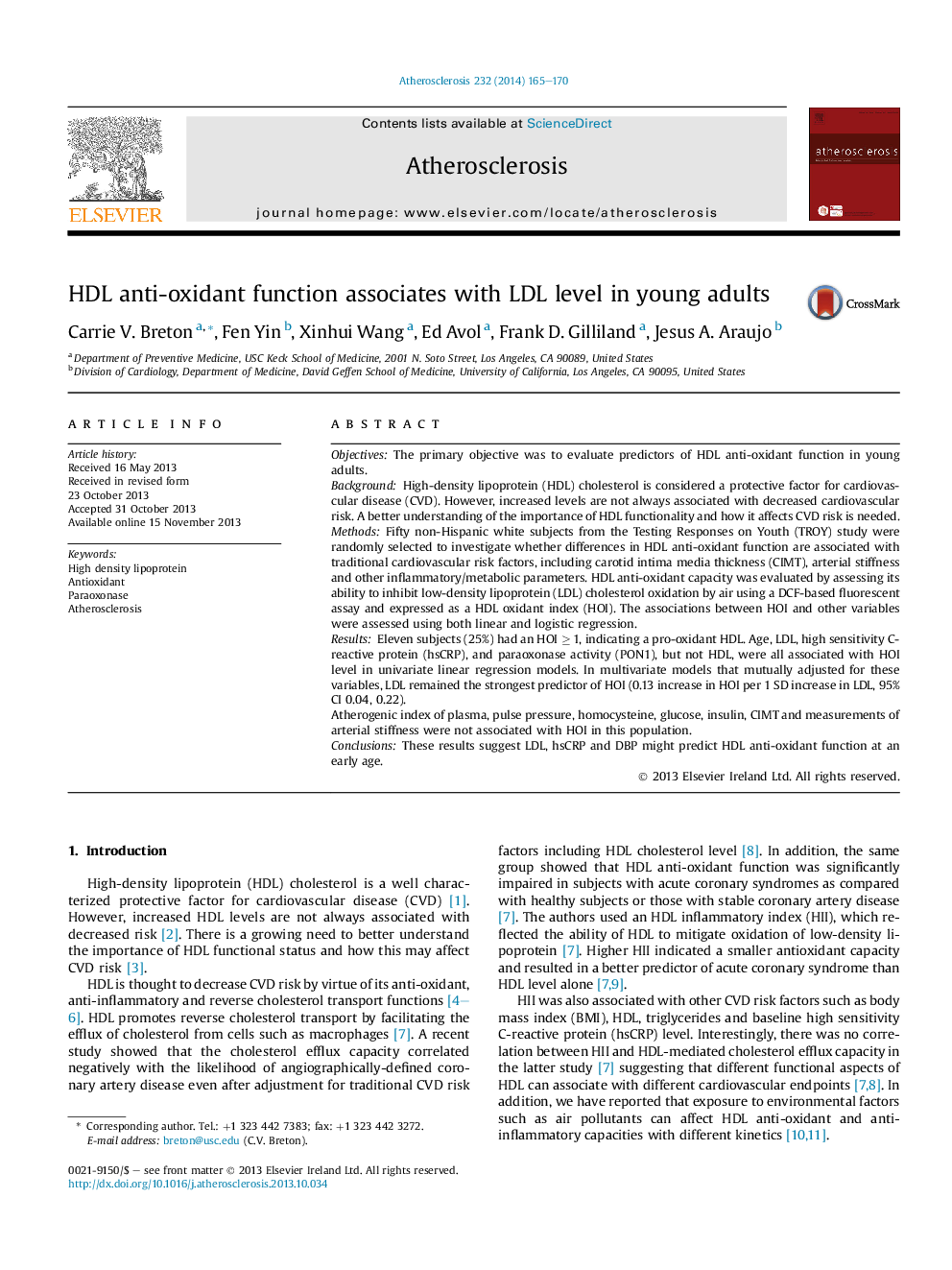| Article ID | Journal | Published Year | Pages | File Type |
|---|---|---|---|---|
| 5945993 | Atherosclerosis | 2014 | 6 Pages |
â¢The importance of HDL antioxidant function in healthy young individuals is unknown.â¢We evaluated predictors of HDL anti-oxidation function in a young adult population.â¢Young adults exhibited a range of pro- and anti-oxidant HDL function.â¢DBP, LDL level, hsCRP, and PON1 were all associated with HDL antioxidant function.â¢LDL level was the strongest predictor of HDL function.
ObjectivesThe primary objective was to evaluate predictors of HDL anti-oxidant function in young adults.BackgroundHigh-density lipoprotein (HDL) cholesterol is considered a protective factor for cardiovascular disease (CVD). However, increased levels are not always associated with decreased cardiovascular risk. A better understanding of the importance of HDL functionality and how it affects CVD risk is needed.MethodsFifty non-Hispanic white subjects from the Testing Responses on Youth (TROY) study were randomly selected to investigate whether differences in HDL anti-oxidant function are associated with traditional cardiovascular risk factors, including carotid intima media thickness (CIMT), arterial stiffness and other inflammatory/metabolic parameters. HDL anti-oxidant capacity was evaluated by assessing its ability to inhibit low-density lipoprotein (LDL) cholesterol oxidation by air using a DCF-based fluorescent assay and expressed as a HDL oxidant index (HOI). The associations between HOI and other variables were assessed using both linear and logistic regression.ResultsEleven subjects (25%) had an HOI â¥Â 1, indicating a pro-oxidant HDL. Age, LDL, high sensitivity C-reactive protein (hsCRP), and paraoxonase activity (PON1), but not HDL, were all associated with HOI level in univariate linear regression models. In multivariate models that mutually adjusted for these variables, LDL remained the strongest predictor of HOI (0.13 increase in HOI per 1 SD increase in LDL, 95% CI 0.04, 0.22).Atherogenic index of plasma, pulse pressure, homocysteine, glucose, insulin, CIMT and measurements of arterial stiffness were not associated with HOI in this population.ConclusionsThese results suggest LDL, hsCRP and DBP might predict HDL anti-oxidant function at an early age.
